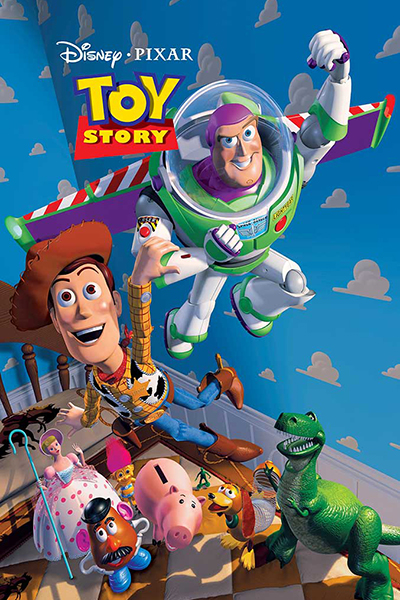Toy Story
- 23 Nov 2016
- This classic and historic animated movie has forever changed its industry.

I rented Toy Story yesterday to celebrate the 21st anniversary of its theatrical release. I watched it for the first time in years; I can’t remember the last time that I’d seen it or recall how many times that I have seen it. I can say that the movie has a place in my heart, like it does for a lot of other people. Not surprisingly, it’s been part of the National Film Registry since 2005, the first year of the movie’s eligibility.
The story is entertainingly simple and simply entertaining, which has become the hallmark of Pixar movies. Woody loses his position as the alpha toy when Andy gets Buzz as a birthday present. Woody accidentally, though not innocently, causes Buzz to become stranded. To regain the trust of the other toys, Woody tries to rescue Buzz before Andy and his family move to another home.
The movie depicts envy, prejudice, and rage in a lighthearted way. Buzz’s delusion about his existence and his depression following his epiphany are funny, but they’re serious concepts if you think about it. Some of the dialogue caters to grown-ups, but older kids can still understand the general idea of these lines because of their context. The plot has enough setbacks to keep the viewer guessing about how the toys will get the happy ending.
The widespread appeal of the movie comes from the toys. Kids can imagine playing with them, and for the toys that have been around for generations, adults can remember playing with them. Woody and Buzz are original creations, but they’ve become iconic and are probably now the most recognizable toys of Toy Story. I can remember Buzz being the most wanted Christmas toy following the movie’s release, so life can actually imitate art.
Toy Story was the first movie to be entirely computer-animated. I was surprised to learn that John Lasseter, the director, had been fired from his job at Disney because he showed an affinity for computer animation when it was still viewed as a novelty. Steve Jobs had the same keen vision as Lasseter, obviously. They along with the business, creative, and technical people at Pixar turned their company into an empire, and its run started with this movie.
The visuals still look good, except maybe the human characters, but the charm of the toys, and their improbable adventure, are the elements that make this movie timeless. I was surprised to see Joss Whedon’s name in the opening credits. The story that he’s co-written is compelling as well as original, whereas Disney’s prior blockbusters are based on a historic person, Shakespearean tragedy, folk lore, and fairy tale.
Pixar wasn’t a part of Disney when Toy Story was released. I forgot that the former was bought by the latter, 10 years ago, and that Jobs became the largest shareholder of Disney as a result. I assumed that their deal had ended, but I was wrong. Disney has two cash-machines in the Pixar modus operandi and in the Marvel Cinematic Universe, and Whedon has played a part in launching both of these brands.
Pixar and Marvel movies are staples of the blockbuster season, and even though I respect the people who are responsible, I’m not a fan of the movies. I like Finding Nemo and Captain America: The Winter Soldier, but I’m not interested in their respective sequels or their movie-spanning universes. I have fond memories of the first half of the Disney Renaissance, but the only Disney-owned movie that I want to see these days is Toy Story 4.